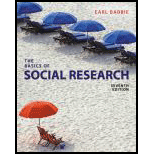
Introduction:
Studies show that conservatives are generally less likely to favor legalizing marijuana than liberals. The book suggests that the time order is more political ideology then position on legalization. It is possible, however, for a person to form their opinion on legalizing marijuana before they solidify their ideology, or change their ideology based on personal experience.
Explanation of Solution
Answer and explanation:
(This question requires a subjective response, this is an example.) Legalizing marijuana is a hot topic in the competition between political ideologies. Some say a person’s political leaning determines their position on whether to legalize, citing research that shows more liberals in support than conservatives. This time order could be problematic, since a person could change their opinion on legalizing after seeing benefits gained by a relative from medical marijuana, for example, and their opinion could cause them to adjust their political ideology to support candidates in favor of legalization. Another argument could be made that a person’s opinion on legalizing marijuana could form before they have fully identified as conservative or liberal, as issues often precede ideology for younger people.
Want to see more full solutions like this?
Chapter 4 Solutions
The Basics of Social Research (MindTap Course List)
- eelancer X English task 1.pdf - Google Driv X kq_A8Yyhcg5Muq83vtY5jmlvjd6ITE/view + Open with Google Docs Task Requirements: Word Count: 300-400 Formatting Style: MLA (for more information click here) *** A minimum of 1 reliable source must be used! Any sources must be properly cited according to the formatting style assigned Many people disagree about the appropriate age to allow children and young adults to use social media. Write an essay that argues your viewpoint about the issue. Develop your claim with reasons and evidence, and form a rebuttal to argue against a counterclaim. Page 1 / 1 Q + 26°C Mcarrow_forwardDCS cans certification exam answers micaharrow_forwardDescribe a business that has used backcasting or scenarios to assess a situation and then developed a strategy to achieve their goals? what are the obstacles they faced ?arrow_forward
- Why could Backcasting be considered the most useful futuring method? how does the use of modules and simulations relate to futuring? is this method effective?arrow_forward"Literature is able to challenge perceptions by capturing the voices of frequently silenced characters". In the light of this comment show how Alexander Masters is successful in promoting Stuart's voice in Stuart: Alfie backwards. Include any quotes which are relevant.arrow_forwardBased on the Practical Foresight GuideLinks to an external site.: select ONE of the futuring methods from the guide and apply it to the Partners in Care problem. PROBLEM to SOLVE from Partners in Care: Increase number of face-to-face/in-person volunteers! As a growing nonprofit, Partners in Care increased the number of virtual volunteers during the pandemic. However, they need more face-to-face (in person) volunteers to help with driving clients to appointments and handyman work. Along with these solutions, they would love to have creative ways to recruit young volunteers to support social media and communication needs. short-term (within the next 3 months) long-term (within the next 2 years)arrow_forward
- If you had to choose one futuring method, which one would be the most useful and why?arrow_forwardWho was John Evander Couey was, what crimes he committed, and who the child was that he harmed. Please include referencesarrow_forwardHow have economic crises such as the Great Depression, the 2008–2009 recession, and the COVID-19 pandemic impacted families in both practical and emotional ways? How do these events continue to shape family life today? In what ways has the definition and structure of “family” evolved in the 21st century? How do these changes reflect broader shifts in societal values, gender roles, and legal recognition of diverse relationships? What are some of the major economic and social challenges facing families today, and how do these challenges differ across social class levels, particularly for working-class and middle-class families? How do you think the increasing visibility of same-sex families, domestic partnerships, and cohabitation without marriage will influence societal norms and policies around family in the coming decades? Given current trends, what do you envision family life will look like in the future—by 2030 or 2040? How might factors like technology, economic instability,…arrow_forward
 Social Psychology (10th Edition)SociologyISBN:9780134641287Author:Elliot Aronson, Timothy D. Wilson, Robin M. Akert, Samuel R. SommersPublisher:Pearson College Div
Social Psychology (10th Edition)SociologyISBN:9780134641287Author:Elliot Aronson, Timothy D. Wilson, Robin M. Akert, Samuel R. SommersPublisher:Pearson College Div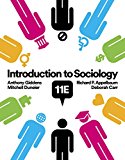 Introduction to Sociology (Eleventh Edition)SociologyISBN:9780393639407Author:Deborah Carr, Anthony Giddens, Mitchell Duneier, Richard P. AppelbaumPublisher:W. W. Norton & Company
Introduction to Sociology (Eleventh Edition)SociologyISBN:9780393639407Author:Deborah Carr, Anthony Giddens, Mitchell Duneier, Richard P. AppelbaumPublisher:W. W. Norton & Company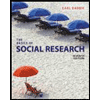 The Basics of Social Research (MindTap Course Lis...SociologyISBN:9781305503076Author:Earl R. BabbiePublisher:Cengage Learning
The Basics of Social Research (MindTap Course Lis...SociologyISBN:9781305503076Author:Earl R. BabbiePublisher:Cengage Learning Criminalistics: An Introduction to Forensic Scien...SociologyISBN:9780134477596Author:Saferstein, RichardPublisher:PEARSON
Criminalistics: An Introduction to Forensic Scien...SociologyISBN:9780134477596Author:Saferstein, RichardPublisher:PEARSON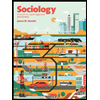 Sociology: A Down-to-Earth Approach (13th Edition)SociologyISBN:9780134205571Author:James M. HenslinPublisher:PEARSON
Sociology: A Down-to-Earth Approach (13th Edition)SociologyISBN:9780134205571Author:James M. HenslinPublisher:PEARSON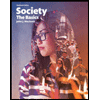 Society: The Basics (14th Edition)SociologyISBN:9780134206325Author:John J. MacionisPublisher:PEARSON
Society: The Basics (14th Edition)SociologyISBN:9780134206325Author:John J. MacionisPublisher:PEARSON





